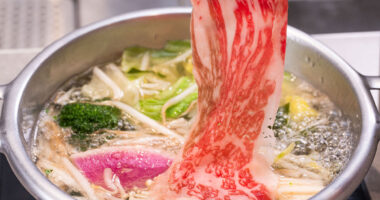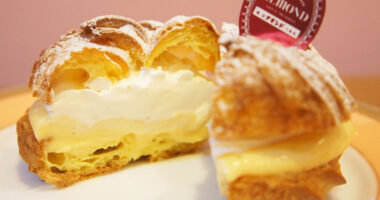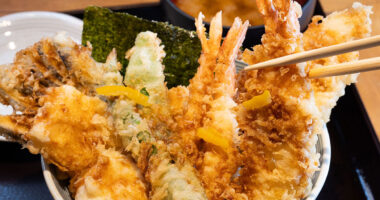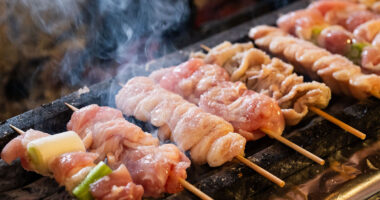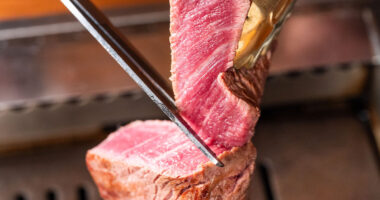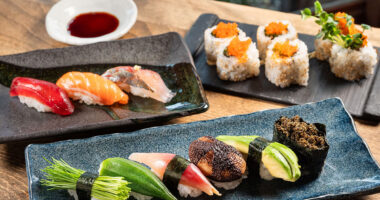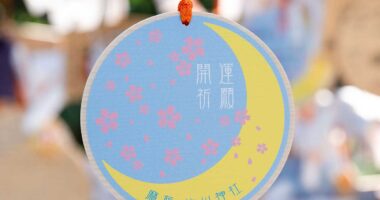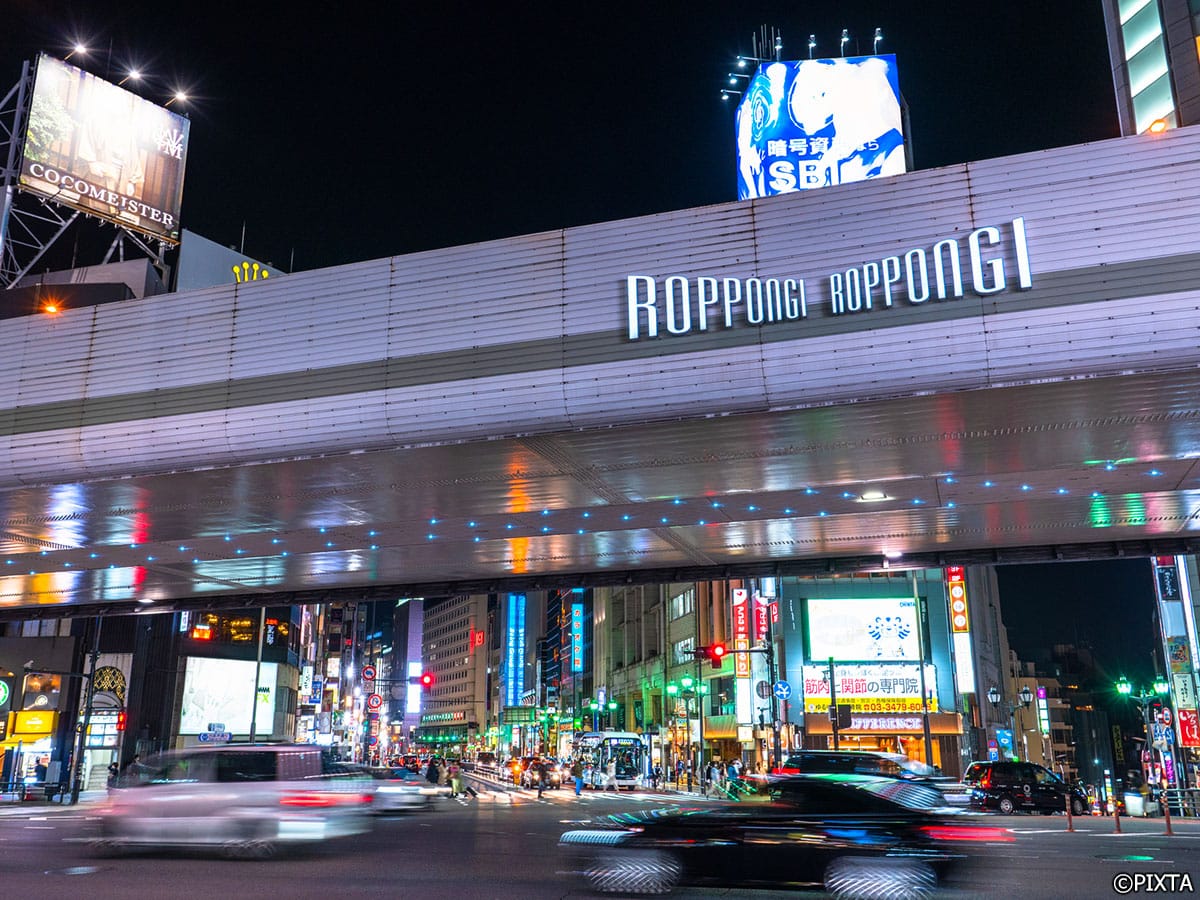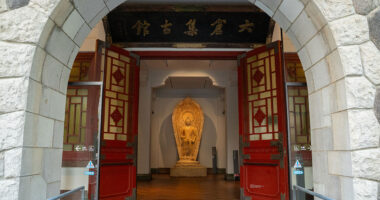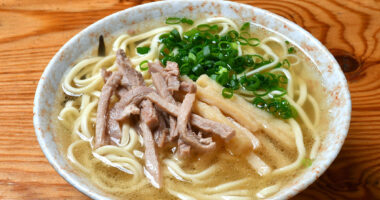A beloved Japanese sweet, ohagi is made with sticky mochi rice coated with sweet bean paste or kinako (roasted soybean flour). Although it’s a traditional dessert, it has been experiencing somewhat of a renaissance since around 2020. It is gaining popularity, especially among those who love sweets, and specialty stores have been popping up all over Japan.
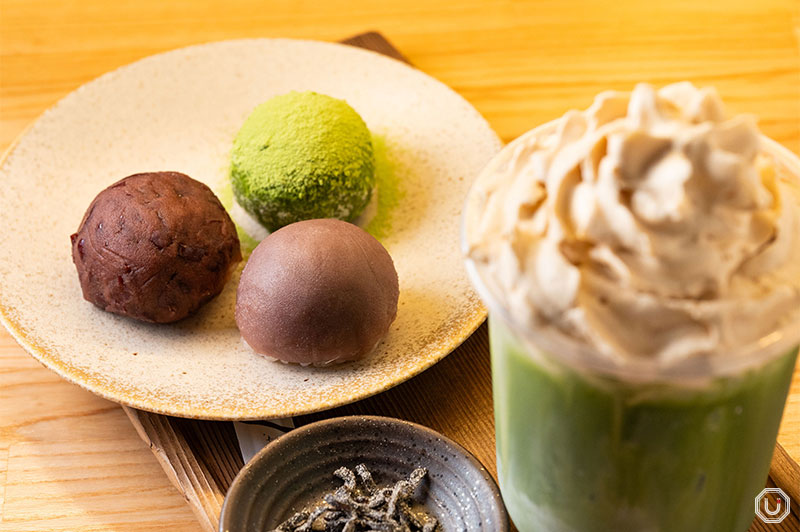
Located in Roppongi Hills, Tokyo, MATSUNARI is a Japanese café where you can enjoy ohagi. Their menu, designed around the theme of “nostalgic yet new,” is loved by people of all ages.
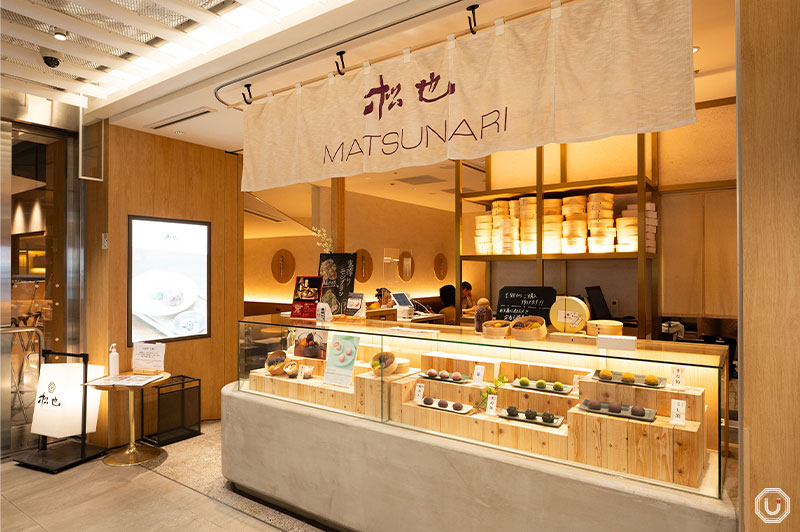
Savoring ohagi with a focus on quality ingredients
At MATSUNARI, six varieties of ohagi are offered. The popular types, featuring an (red bean paste), are the smooth tsubuan and the chunky koshian. These ohagi, made only with mochi rice and bean paste, let you fully enjoy the deliciousness of their an.
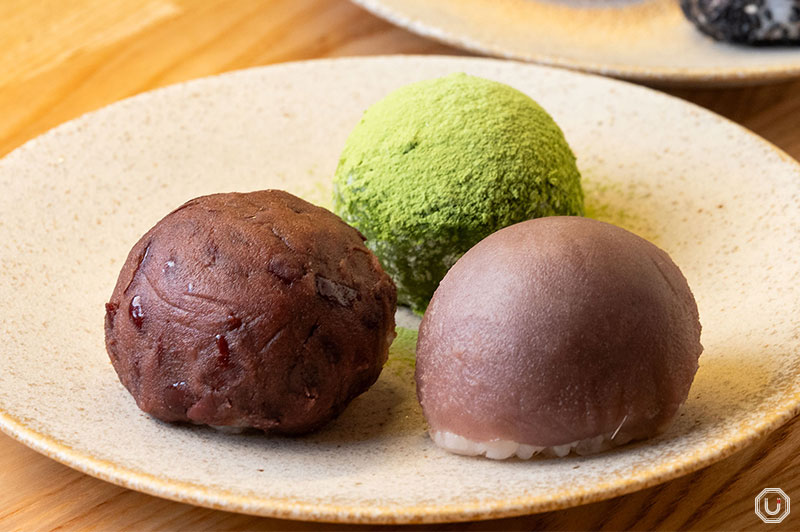
“つぶ餡,” TSUBUAN (front left), “こし餡,” KOSHIAN (front right), “みどり,” MIDORI (back) 650 JPY apiece (tax included) served with Hojicha tea
The “TSUBUAN” at MATSUNARI offers a unique taste experience with its in-house prepared bean paste crafted from Tamba Dainagon Azuki beans, known for its large grains. The ohagi has a delightful dual texture, providing a satisfying feel of both the bean’s body and skin in every bite.
The “KOSHIAN,” on the other hand, uses an specially ordered from Kinoshita Seian, a company with over 90 years of history. This ohagi, with its smooth texture and light sweetness, pairs well with the accompanying salted kelp.
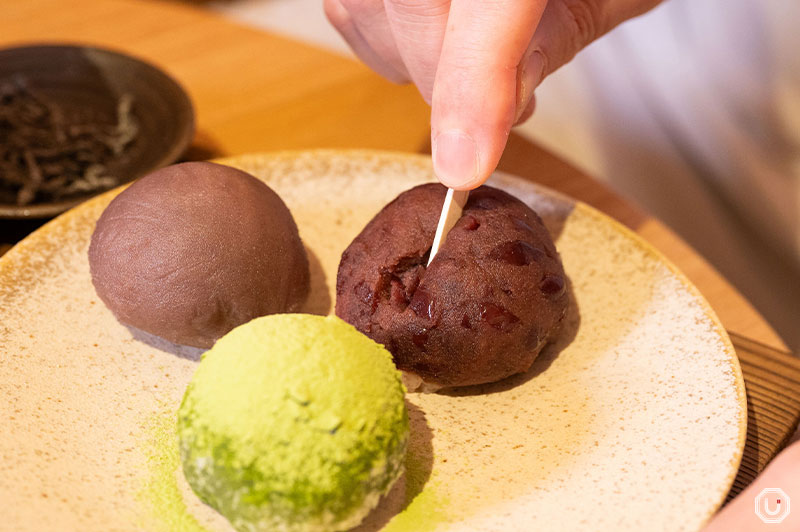
The brightly green “MIDORI” (meaning “green” in Japanese) is an ohagi made with matcha and yomogi (mugwort). Enjoy its subtle bitterness! Before serving, matcha and yomogi powder are sprinkled on top, enhancing its fresh aroma.
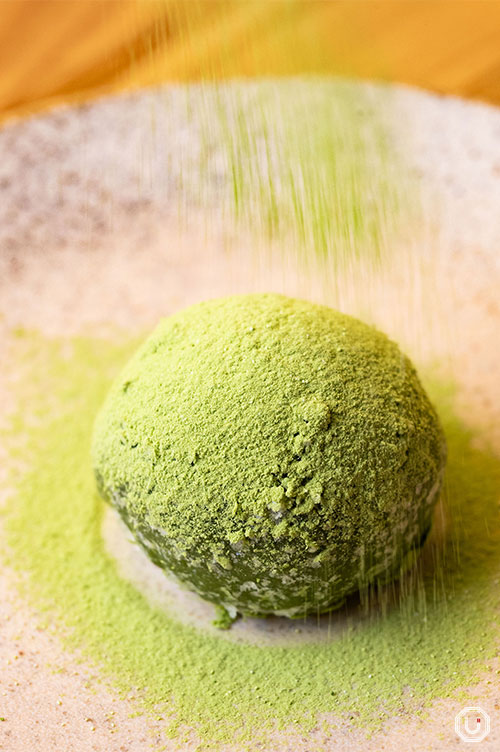
“みどり,” MIDORI
Other flavors include the perfectly tart “STRAWBERRY,” the aromatic “KUROGOMA” (black sesame), and the irresistibly nutty “KINAKO” (roasted soybean flour).
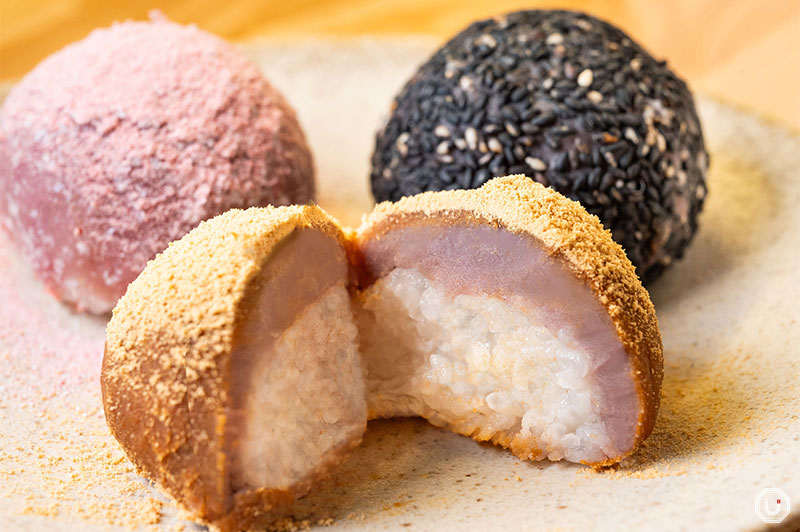
“きな粉,” KINAKO (front), “いちご,” STRAWBERRY (back left), “黒胡麻,” KUROGOMA (back right) 650 JPY apeice (tax included) served with Hojicha tea
Bensky of the Umami bites editorial team tasted all six ohagi varieties and had this to say, especially about the KINAKO he favored:

I can’t get enough of this tsubuan powdered with kinako. The wonderful pairing of smooth an and roasted soybean flour had me hooked from the very first bite. I love how this ohagi brings out the best of both flavors!
While savoring MATSUNARI’s ohagi, you’ll want to try their “MATCHA LATTE” as well. You can order it separately or as a set with ohagi.
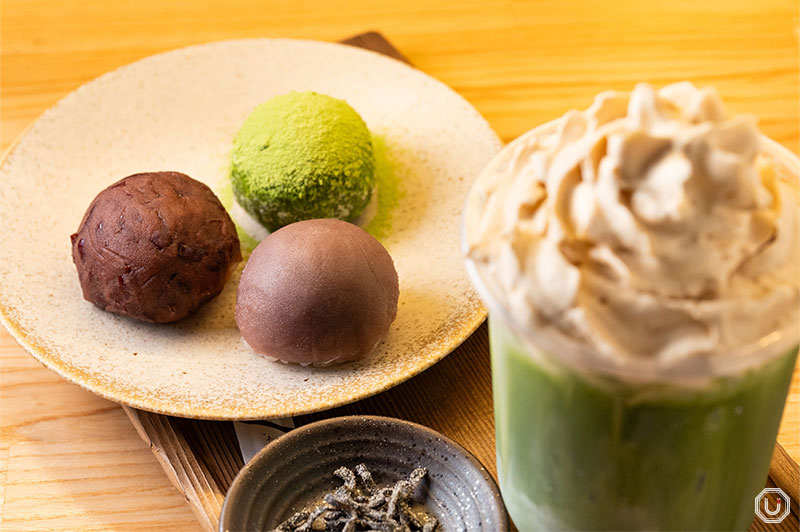
“抹茶ラテ,” MATCHA LATTE 680 JPY (tax included) / Set: menu item + 300 JPY (tax included)
The matcha-infused milk is topped with cream made using kokutō, a dark natural cane sugar harvested in the southern islands of Japan. Mixing it with the matcha softens the bitterness, creating an elegant sweetness.
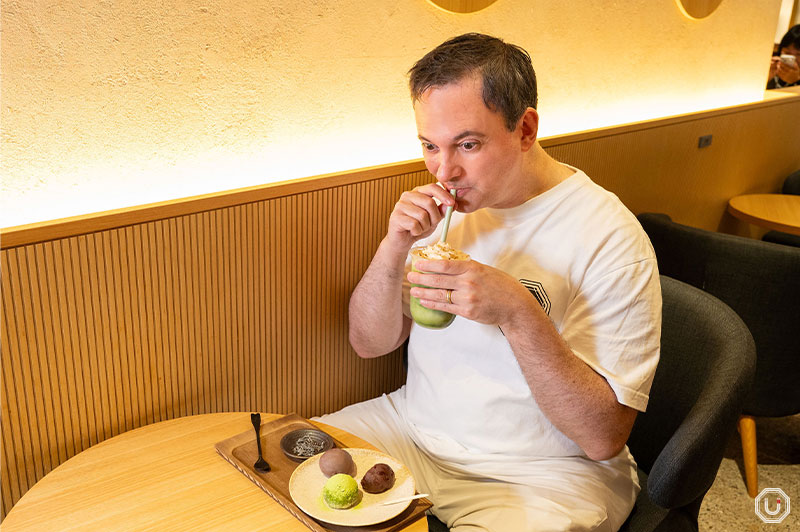

The richness of the kokutō enhances the flavor of the matcha. It’s not too sweet, making it a perfect match with ohagi!
The allure of “CREAM ANMITSU” with large shiratama dumplings
The “CREAM ANMITSU” at MATSUNARI offers a delightful twist on the classic Japanese dessert, anmitsu. While traditional anmitsu is known for its agar jelly, fruit, and red bean paste, cream anmitsu is anmitsu à la mode.
MATSUNARI’s version features the usual agar jelly and ice cream, complemented by luscious strawberries and shiratama—large, soft white rice dumplings—all crowned with a generous serving of ice cream. This combination not only enhances the flavors but also creates a visually enticing dish that’s perfect for both tasting and photographing.
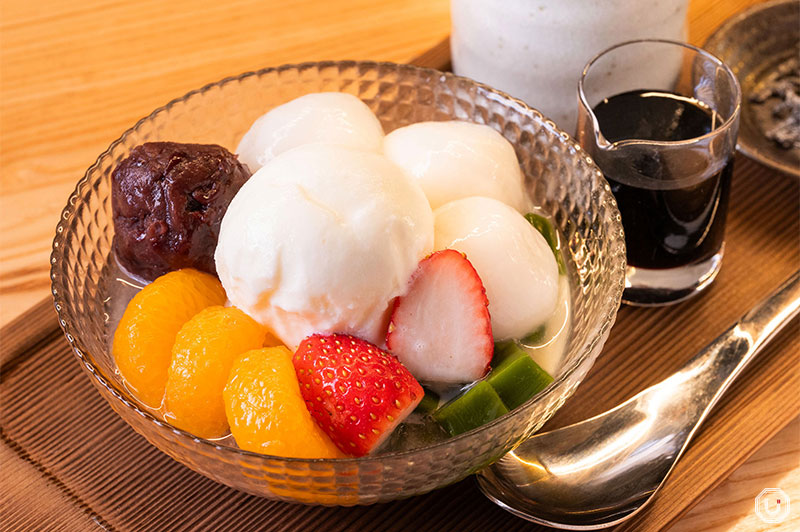
“クリームあんみつ,” CREAM ANMITSU 1,280 JPY (tax included) served with Hojicha tea
The bean paste, created with the perfect firmness and subtle sweetness to complement the ingredients, is recommended to be enjoyed with the chewy large shiratama dumplings.
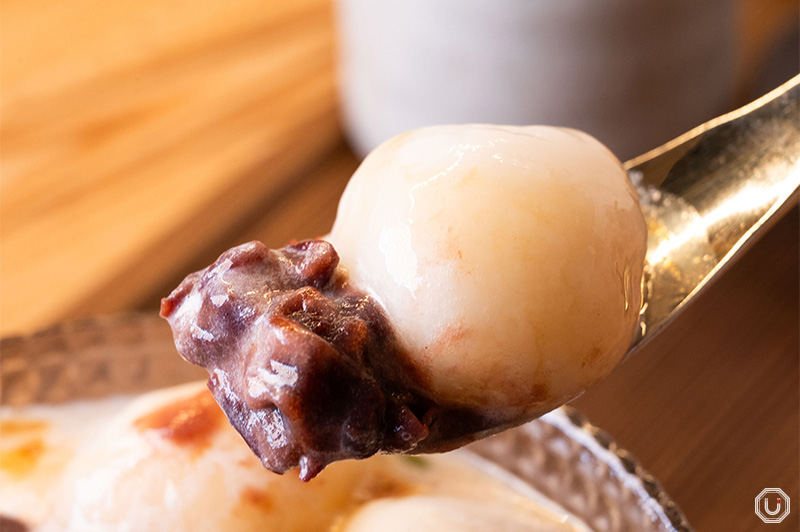
The anmitsu uses two types of agar jelly: plain and matcha. Savor the rich flavor of matcha while enjoying your anmitsu!
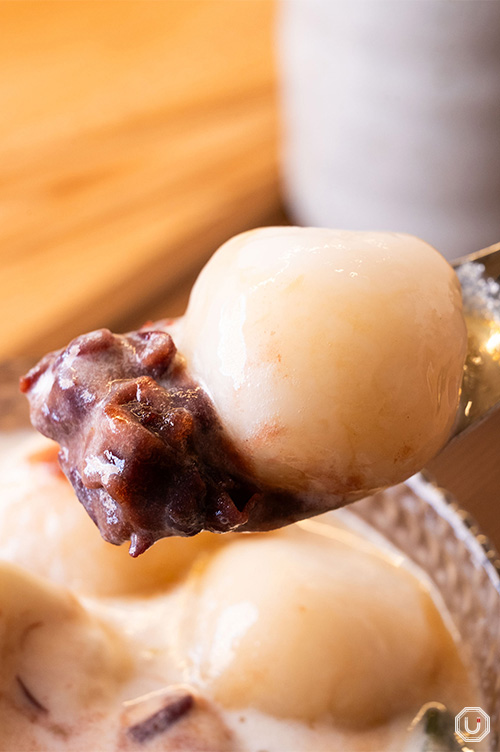
Their ohagi, anmitsu desserts and tea-infused latte drinks are also available for take-out. If you’re short on time to dine in, enjoy them to go!
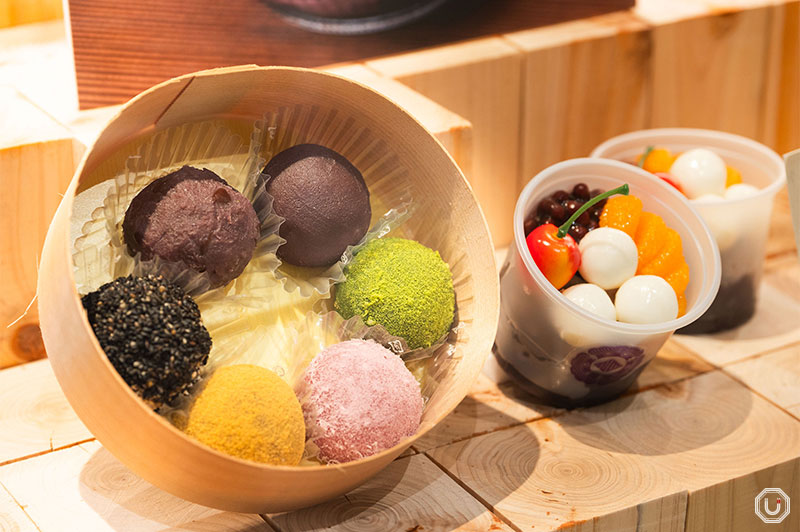
Information
| Store name | MATSUNARI-まつなり- MATSUNARI |
|---|---|
| Address | North Tower, Roppongi Hills B1F, 6-2-31 Roppongi, Minato-ku, Tokyo
|
| Access |
Roppongi Station Short walk from Roppongi Station Nishi Azabu Gate
|
| Phone number | 03-6804-3655 |
| Reservations | Not accepted |
| Payment |
|
| Service charge/Table charge | None |
| Hours | 11:00-20:00(last order 19:00) |
| Closed | No holidays excluding Roppongi Hills holidays |
| Seating | 19 seats 5 counter seats, 14 table seats |
| Smoking | All seats are non-smoking |
| Official website | https://www.ec-corp.jp/matsunari |
| Other information |
|
※Menu contents, prices, store information, etc. are current as of December 2023.

